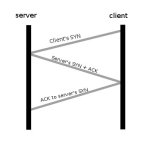
10 Awesome Companies Built by Teens
The entrepreneurial spirit starts early for many teenagers, but for most things like high school, college and social lives overpower the urge to start a business.
But not every teenager.
Occasionally there are a few really driven youngsters who actually create successful companies before they are old enough to vote, buy alcohol, or even drive. Here are 10 inspirational stories of some incredibly successful young entrepreneurs, who all started their empires in their teens.
1. Fred De Luca
In 1965 Fred De Luca borrowed just $1,000 to start the now-famous Subway sandwich restaurant. Fred was only 17 years old when he decided to be an entrepreneur, and he started the restaurant as a way to earn money for college. Since opening the first shop in Boston, the chain now has 32,401 locations and makes over $9 billion in sales yearly. Fred and his co-founder Peter Buck have also founded Franchise Brands, a resource to help franchisors and entrepreneurs grow their brands.
2. Mark Zuckerberg
Mark Zuckerberg created the software that would eventually become the popular social networking site Facebook while he was at Harvard. He launched the site from his dorm room, and since that day has become the youngest self-made businessman who is worth more than a billion dollars. Zuckerberg dropped out of college and became the CEO of the fastest-growing site on the Internet. Facebook has since recorded over 400 million users and is now one of the most successful Web sites ever built.
3. Matt Mullenweg
Matt Mullenweg is another software developer who found success at a very early age. When Matt was 19, he announced that he would be starting an open source initiative for better blogging software and started WordPress. Since then the software programmer started Automattic, which has two flagship products Akismet, a trap for site comment spam, and WordPress.com, the hosted version of the open source WordPress software. Since founding Automattic, the company has raised over $30 million dollars and owns some of the most popular software on the Web.
4. Anand Lal Shimpi
Anand Lal Shimpi started AnandTech in 1997, when he was only 14 years old. The original AnandTech Web site was hosted on a GeoCities platform. What started as a simple hobby grew into one of the world’s largest Web sites covering computer hardware. The AnandTech forums is one of the best places to get computer advice and find tech bargains.
5. Carl Churchill
By 2020, Carl Churchill is expected to be worth $100 million. Carl founded DMC Internet in 2001 at the age of 15, and since has built an empire on helping businesses with their Internet presence. Churchill’s company offers anything from wireless broadband to server security for businesses, and from its launch grew exponentially. So much so that in 2003 Churchill was listed in the Royal Bank of Scotland’s “Rich List” of under 21s who would be millionaires.
6. Farrah Gray
Farrah Gray was a successful businessman before he reached his teens, and his success story is so bizarre that it’s almost impossible to believe. When he was 10 Gray formed a club that raised $15,000 for financing a lemonade stand, by 12 he had started a venture capital firm that raised $1 million from investors to help teenagers start their own business. Before he was 16 he had started business ventures that include pre-paid phone cards, One Stop Mailboxes & More franchises and The Teenscope “Youth AM/FM” interactive talk show. He became executive producer of a comedy show on the Las Vegas Strip, and was the owner of a food company that had orders exceeding $1.5 million.
Gray has since become a best-selling author. In 2005 his book Reallionaire was an international bestseller, and was even endorsed by Bill Clinton. Gray has written many books since then, including co-authoring Chicken Soup for the African-American Soul. But aside from all his success, Gray started his own non-profit Farrah Gray Foundation, which gives grants and scholarships to inner-city and students with at-risk backgrounds. And he’s done all this well before his thirtieth birthday.
7. Romero Bryan
Romero Bryan started designing clothes at the age of 12, and his own clothing line has taken off like a rocket. He’s dressed some of the most popular people on the planet including Beyonce, Victoria Beckham, Cameron Diaz, and Alicia Keys. Romero’s empire is expected to earn him over 30 million pounds by 2020.
8. Kristopher Tate
Kristopher Tate is a kind of programming wunderkind. Tate started working with HTML at age 4, before most kids have started reading. He started the photo-sharing site Zooomr at age 17 as a competitor to Flickr. Since then the company has grown into one of the top photo-sharing services on the Web. He has since moved the site’s headquarters to Japan, and is involved in creating Japan’s first society-based community site.
9. Jason O’Neill
Jason O’Neill has probably the most successful business created by someone under 10. At the age of 9, Jason started making Pencil Bugs, colorful pencil toppers in the shape of bugs. Aside from his business, Jason’s been featured on many major network shows, not only for his young entrepreneurship, but also for his philanthropic efforts. He’s donated money for foster children, and has sent his pencils to schoolchildren in Africa.
10. Fraser Doherty
While most successful young entrepreneurs make their money building popular Web sites, Fraser Doherty built his empire using a more traditional way. Fraser started making jams at the age of 14 in Scotland, and by 16 left school to work on his jam business SuperJam full-time. SuperJam sells around 500,000 jars a year, which currently has around 10 percent of UK jam market.








